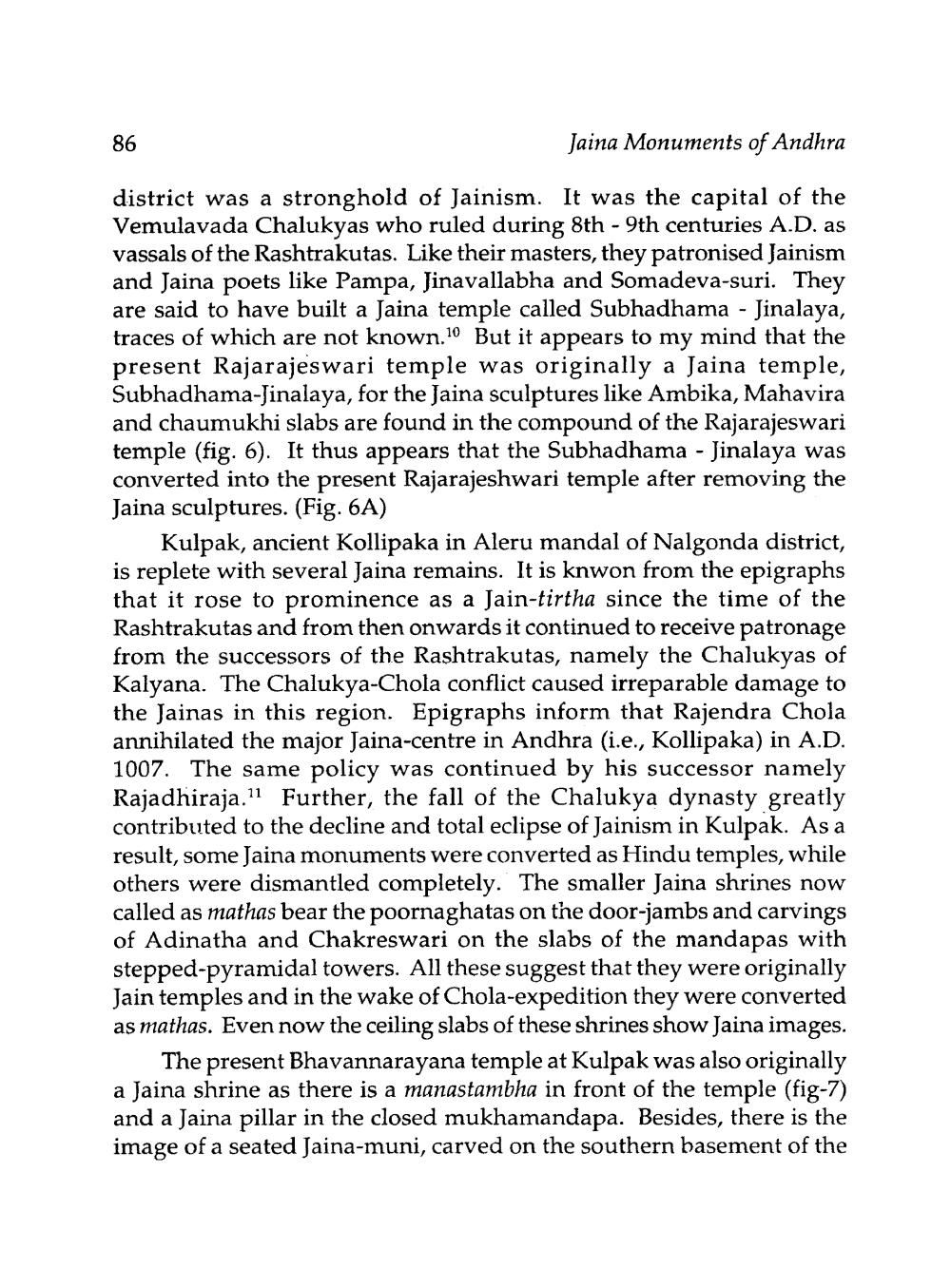________________
86
Jaina Monuments of Andhra
district was a stronghold of Jainism. It was the capital of the Vemulavada Chalukyas who ruled during 8th - 9th centuries A.D. as vassals of the Rashtrakutas. Like their masters, they patronised Jainism and Jaina poets like Pampa, Jinavallabha and Somadeva-suri. They are said to have built a Jaina temple called Subhadhama - Jinalaya, traces of which are not known.10 But it appears to my mind that the present Rajarajeswari temple was originally a Jaina temple, Subhadhama-Jinalaya, for the Jaina sculptures like Ambika, Mahavira and chaumukhi slabs are found in the compound of the Rajarajeswari temple (fig. 6). It thus appears that the Subhadhama - Jinalaya was converted into the present Rajarajeshwari temple after removing the Jaina sculptures. (Fig. 6A)
Kulpak, ancient Kollipaka in Aleru mandal of Nalgonda district, is replete with several Jaina remains. It is knwon from the epigraphs that it rose to prominence as a Jain-tirtha since the time of the Rashtrakutas and from then onwards it continued to receive patronage from the successors of the Rashtrakutas, namely the Chalukyas of Kalyana. The Chalukya-Chola conflict caused irreparable damage to the Jainas in this region. Epigraphs inform that Rajendra Chola annihilated the major Jaina-centre in Andhra (i.e., Kollipaka) in A.D.
07. The same policy was continued by his successor namely Rajadhiraja. 11 Further, the fall of the Chalukya dynasty greatly contributed to the decline and total eclipse of Jainism in Kulpak. As a result, some Jaina monuments were converted as Hindu temples, while others were dismantled completely. The smaller Jaina shrines now called as mathas bear the poornaghatas on the door-jambs and carvings of Adinatha and Chakreswari on the slabs of the mandapas with stepped-pyramidal towers. All these suggest that they were originally Jain temples and in the wake of Chola-expedition they were converted as mathas. Even now the ceiling slabs of these shrines show Jaina images.
The present Bhavannarayana temple at Kulpak was also originally a Jaina shrine as there is a manastambha in front of the temple (fig-7) and a Jaina pillar in the closed mukhamandapa. Besides, there is the image of a seated Jaina-muni, carved on the southern basement of the




